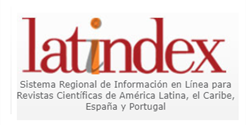LONGITUDINAL STUDY OF THE PHYSICAL FITNESS OF SCHOOL-AGED STUDENTS
DOI:
https://doi.org/10.56219/dialctica.v2i26.4706Keywords:
physical condition, anthropometry, effects of physical education, school ageAbstract
This article presents an academic analysis of the physical and anthropometric status of school-aged students, based on the results of physical and anthropometric assessments conducted at the beginning and end of the 2024 academic year. The study employed a quantitative, longitudinal approach with a quasi-experimental design. From a population of 315 students, a sample of 150 seventh-grade students—drawn from low, middle, and lower-middle socioeconomic strata—was selected through convenience sampling. The participants, aged between 11.5 and 16.6 years (66 females and 84 males), were enrolled at INEM Francisco de Paula Santander School in Bogotá.The administered assessments included measurements of body weight, height, body mass index (BMI), flexibility, abdominal strength (sit-ups), upper body strength (arm flexion), standing long jump, and sprinting speed. Data analysis was conducted using the STATPLUS software, and the normality of data distribution was evaluated using the same program. Given the non-normal distribution of the data, the non-parametric Wilcoxon test was employed for statistical analysis.The study complied with ethical standards for research in education, including informed consent from students' legal guardians and the assurance of data confidentiality. The findings support the alternative hypothesis (H₁): a single weekly physical education class over the course of one academic year does not produce statistically significant changes in students’ anthropometric indicators or physical fitness levels.
Downloads
References
Camporredondo, Gallegos, Gabriel. (2023). La batería EUROFIT como un instrumento para diagnosticar la condición física de los alumnos del Seminario Menor Diocesano de Morelia, Michoacán. Universidad Vasco de Quiroga. Retomado de: http://dspace.uvaq.edu.mx:8080/xmlui/bitstream/handle/123456789/2936/2936.pdf?sequence=5&isAllowed=y
Contreras, Orozco. Astrid. Prías, Vanegas. Hilda. E. (2020). Intervención Educativa Para la Promoción de Estilos de Vida Saludables en Adolescente. Revista Espacios Vol. 41 Art. 17.Retomado de: https://revistaespacios.com/a20v41n37/a20v41n37p17.pdf
Clear. James. (2019). Hábitos Atómicos. Editorial Planeta Colombiana.
Delgado-Floody, Pedro; Caamaño, Felipe; Osorio, Aldo; Jerez, Daniel; Fuentes, Juan; Levin, Eduardo; Tapia, Juan. (2017). Imagen corporal y autoestima en niños según su estado nutricional y frecuencia de actividad física Revista Chilena de Nutrición, vol. 44, núm. 1, marzo, 2017, pP. 12-18 Sociedad Chilena de Nutrición, Bromatología y Toxicología Santiago, Chile. Recuperado de: https://www.redalyc.org/articulo.oa?id=46950536002.
Gálvez, Casas. Aránzazu, Ángeles. (2004) Tesis de Doctorado Actividad física habitual de los adolescentes de la región de Murcia. Análisis de los motivos de práctica y abandono de la actividad físico-deportiva. Universidad de Murcia. España. Recuperado de: https://www.efdeportes.com/efd107/motivos-de-practica-y-abandono-de-la-actividad-fisico-deportiva.pdf
García, Vásquez. Claudia, Patricia. Ortiz, Colorado. Lucia. Zapata, Franco, Clara Inés. (2018). ESTUDIO DE VIABILIDAD PARA LA CREACION DE UNA CLINICA ESPECIALIZADA EN HABITOS DE VIDA SALUDABLE EN LA CIUDAD DE PEREIRA. Retomado de: https://digitk.areandina.edu.co/bitstream/handle/areandina/752/viabilidadclinicasaludable.pdf?sequence=1&isAllowed=y
Hernández, Álvarez, J.L. Del Campo, Vecino, J. Martínez, de Haro, V. Y Moya, Morales. J. M. (2010). Percepción de esfuerzo en educación física y su relación con las directrices sobre actividad física. Revista Internacional de Medicina y Ciencias de la Actividad Física y el Deporte vol. 10 (40) pP. 609-619. Http://cdeporte.rediris.es/revista/revista40/artpercepcion185.htm
Hernández, Sampieri. Roberto. Fernández, Collado. Carlos. Baptista, Lucio. María Del Pilar. (2014). Metodología de la Investigación. Sexta edición. Editorial Mc Grawl Hill Education. ISBN: 978-1-4562-2396-0.
Martínez, Martínez, Jesús. Contreras, Jordán, Onofre, Ricardo. Aznar, Laín, Susana. Lera, Navarro, Ángela. (2012). Niveles de actividad física medido con acelerómetro en alumnos de 3º ciclo de Educación Primaria: actividad física diaria y sesiones de Educación Física Revista de Psicología del Deporte, vol. 21, núm. 1, 2012, pP. 117-123 Universitat de les Illes Balears Palma de Mallorca, España. Retomado de: https://www.redalyc.org/pdf/2351/235124455015.pdf
Marqués, Adilson. Peralta, Miguel. Sturm, David Joseph. Demetriou, Yolanda. Popovic, Stevo. Masanovic, Bojan. Gardasevic, Jovan. López-Flores, Marcos. Villalaín, Alba Mayor. Markovic, Mojca. Tsiatsos ,Thrasyvoulos. Douka, Stella. Martins, João. Gomes, Fernando. Avelar-Rosa, Bruno. Romero, Santiago. Comier, Darryl. Duarte Henriques-Neto. (2021). Protocolo de Pruebas de Aptitud Física EUFITMOS. Retomado de: https://eufitmos.eu/wp-content/uploads/2022/12/EUFITMOS-fitness-testing-protocol_ES.pdf
Ministerio de Educación Nacional de Colombia (2022). Orientaciones curriculares para la educación física, recreación y deportes en educación básica y media. Retomado de: https://www.mineducacion.gov.co/1780/articles-411706_recurso_3.pdf
Piñeros, M. Pardo, C. (2010). Actividad física en adolescentes de cinco ciudades colombianas: resultados de la encuesta mundial de salud juvenil. Bogotá. Recuperado de: http://www.scielo.org.co/pdf/rsap/v12n6/v12n6a03.pdf
Ramírez, William. Vinaccia, Stefano. Suarez, Gustavo. (2004). El impacto de la actividad física y el deporte sobre la salud, la cognición, la socialización y el rendimiento académico: una revisión teórica. Universidad de Antioquia. U. San buenaventura. Medellín. Recuperado de: http://www.scielo.org.co/scielo.php?script=sci_arttext&pid=S0123-885X2004000200008
Reyes, Rodríguez, Alixon David. Rivas, Jonel. Pávez, Adasme, Gustavo. (2020). Tiempo de compromiso motor en la clase de educación física. Voces de la Educación, ISSN 1665-1596, ISSN-e 2448-6248, Vol. 5, Nº. 10, 2020, págs. 90-113. Universidad Adventista de Chile. Ministerio del Poder Popular para la Educación. Recuperado de: https://dialnet.unirioja.es/servlet/articulo?codigo=7508512
Downloads
Published
How to Cite
Issue
Section
License

This work is licensed under a Creative Commons Attribution-NonCommercial-ShareAlike 4.0 International License.
La revista Dialéctica conserva los derechos patrimoniales (copyright) de las obras publicadas, que favorece y permite la reutilización de los mismos bajo la licencia Creative Commons Atribución-NoComercial-CompartirIgual 4.0 , por lo cual se pueden copiar, usar, difundir, transmitir y exponer públicamente, siempre que se cite la autoría y fuente original de su publicación (revista, editorial, URL y DOI de la obra), no se usen para fines comerciales u onerosos y se mencione la existencia y especificaciones de esta licencia de uso. Si remezcla, transforma o crea a partir del material, debe distribuir su contribución bajo la misma licencia del original.











